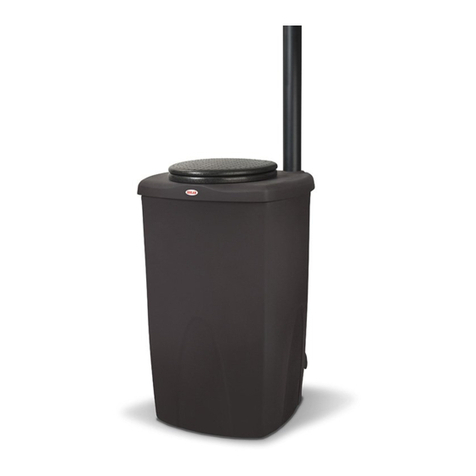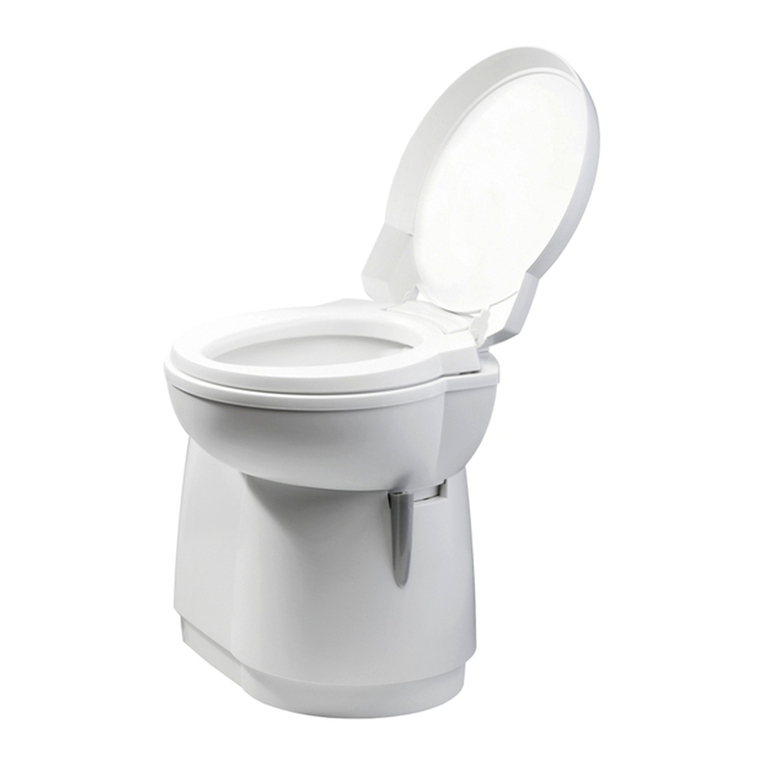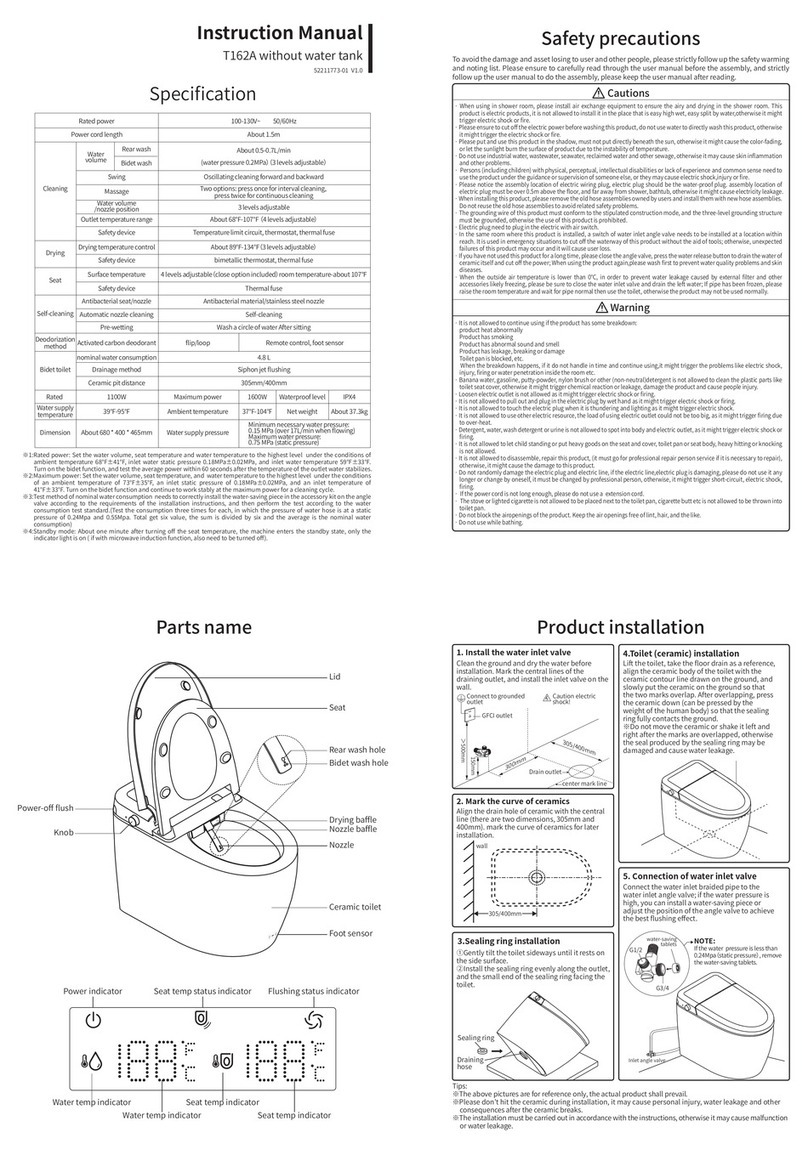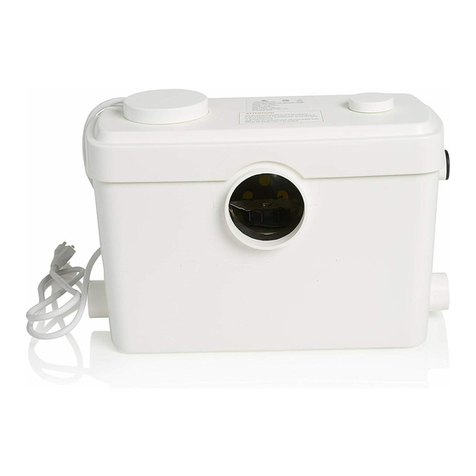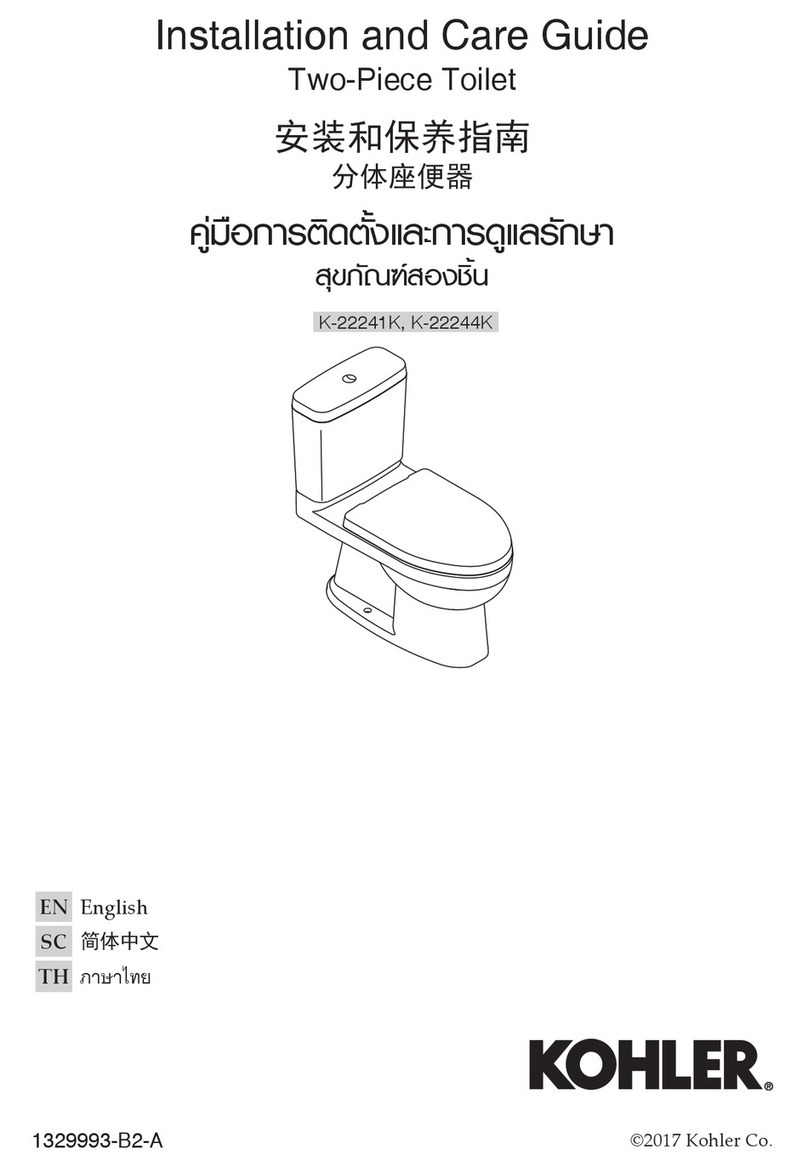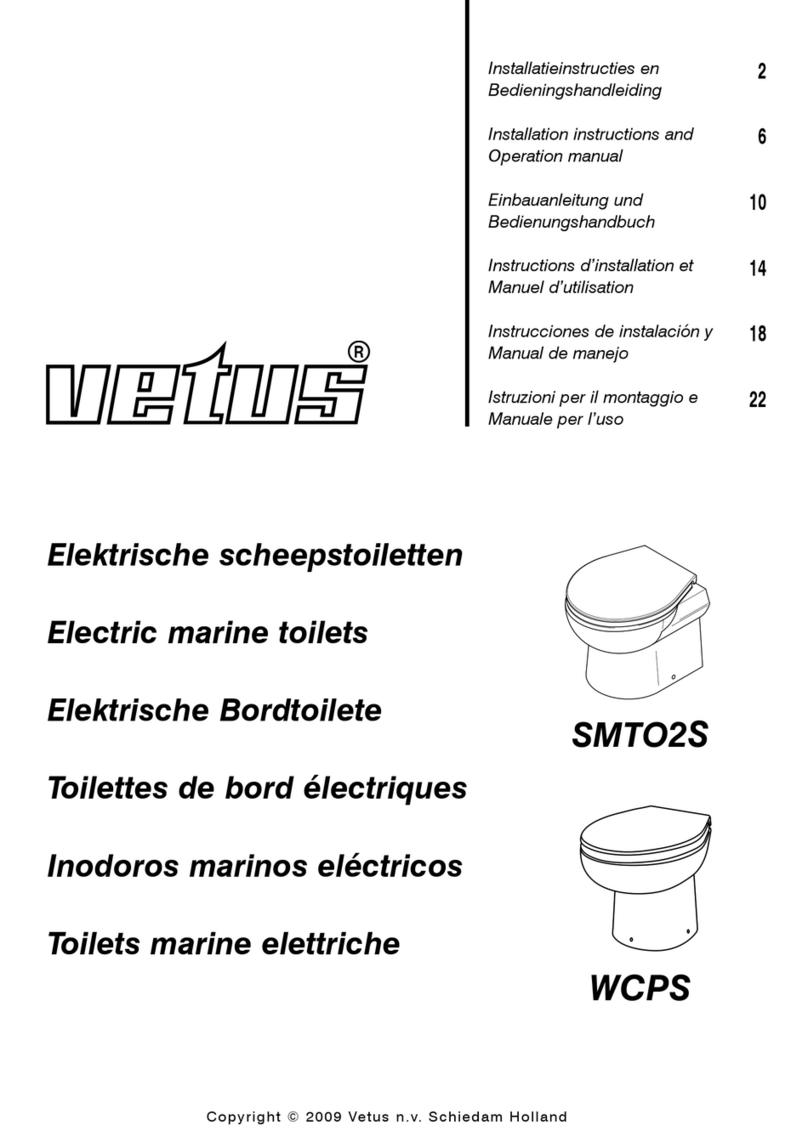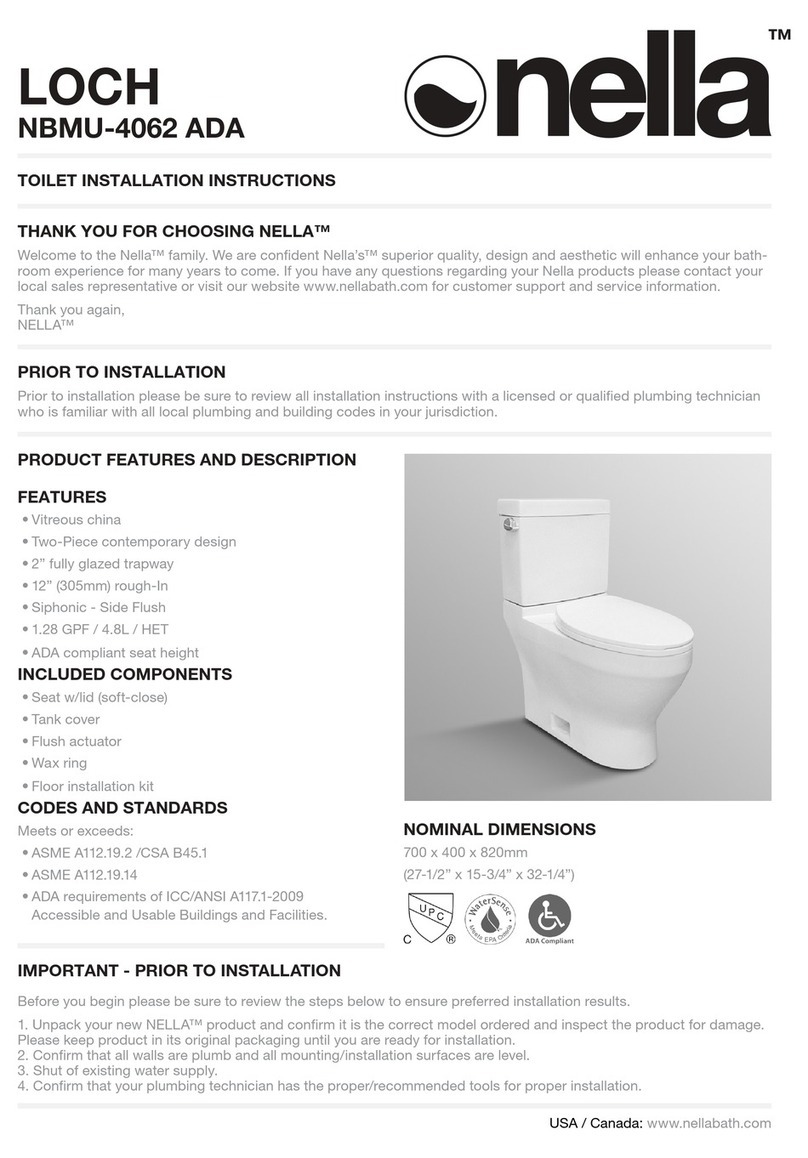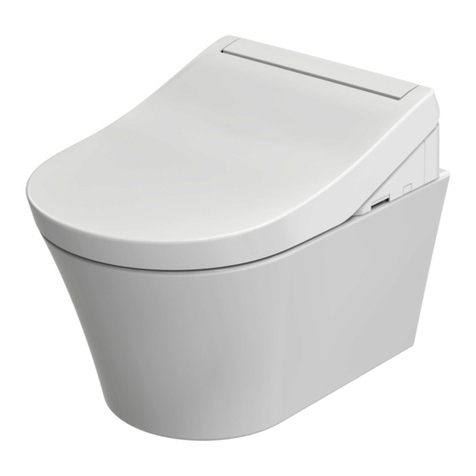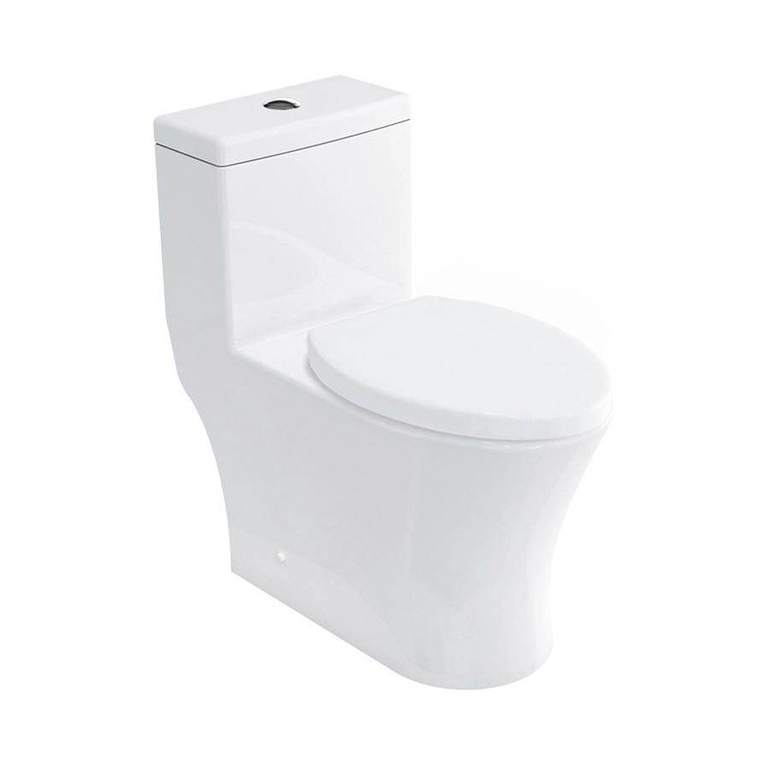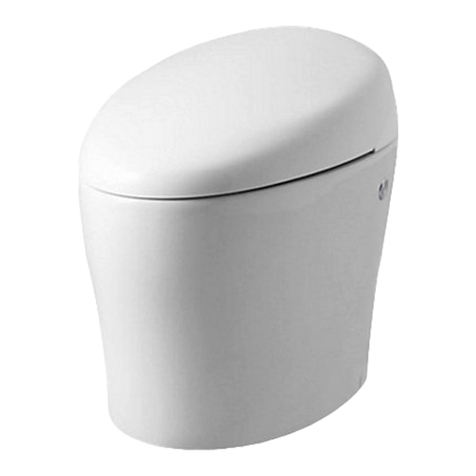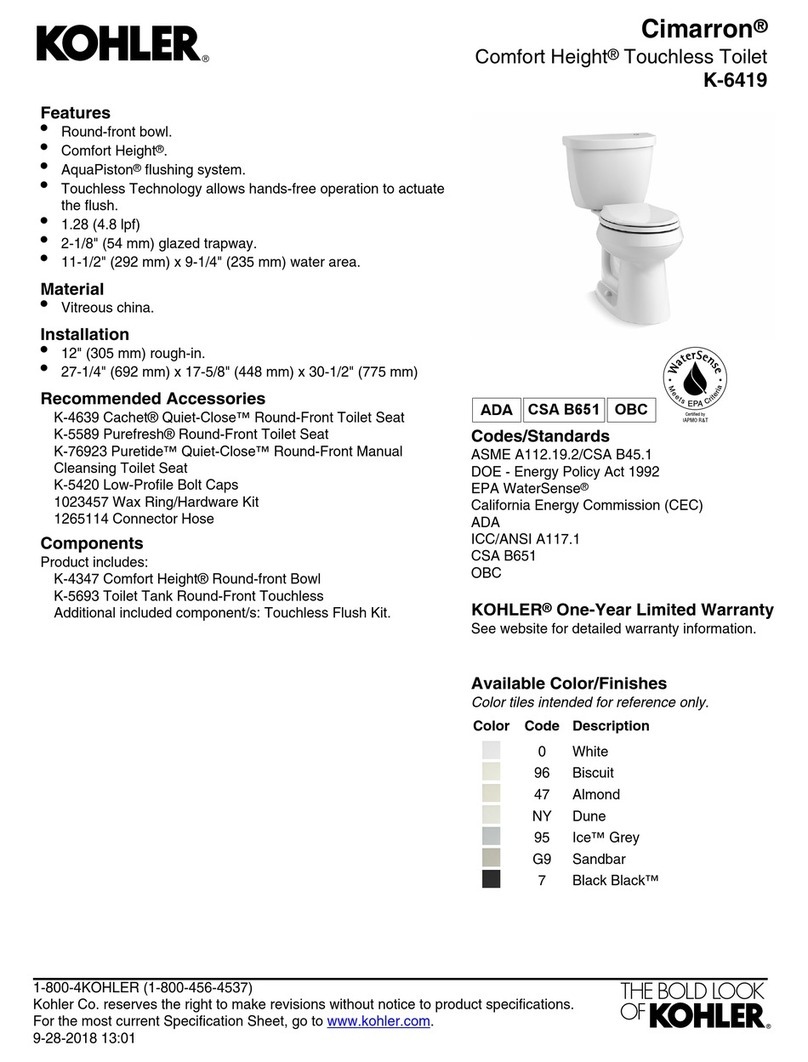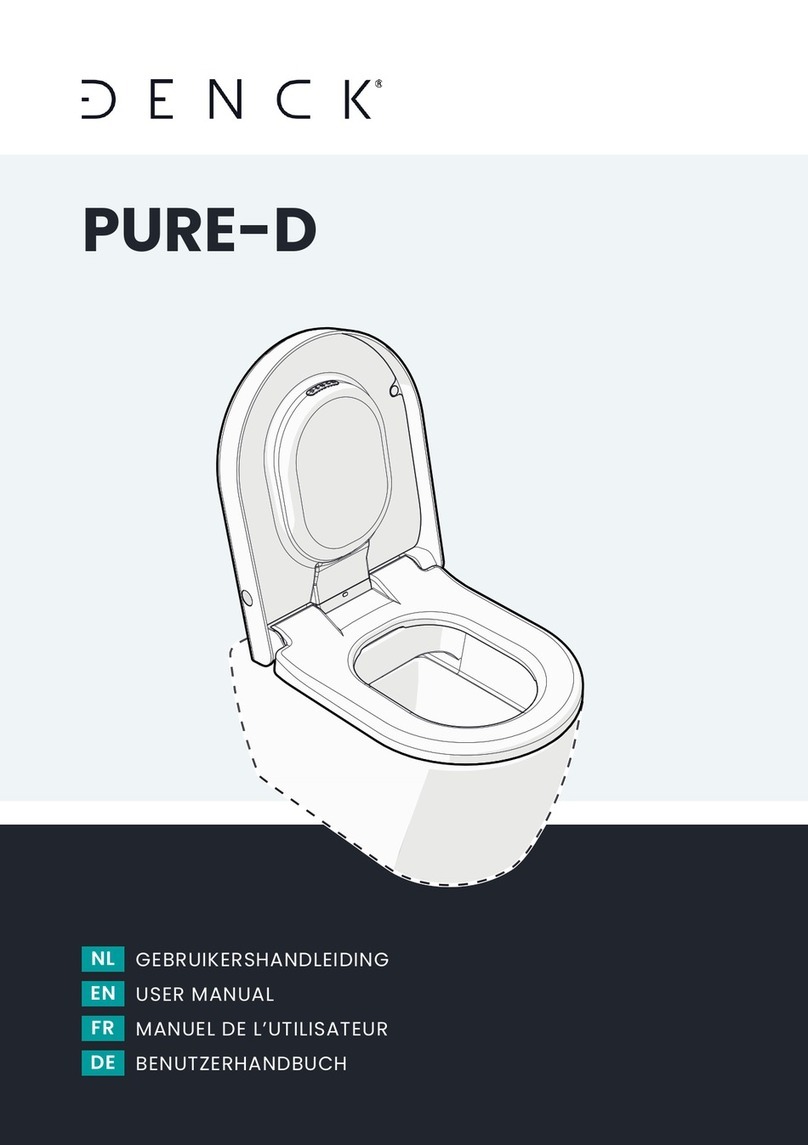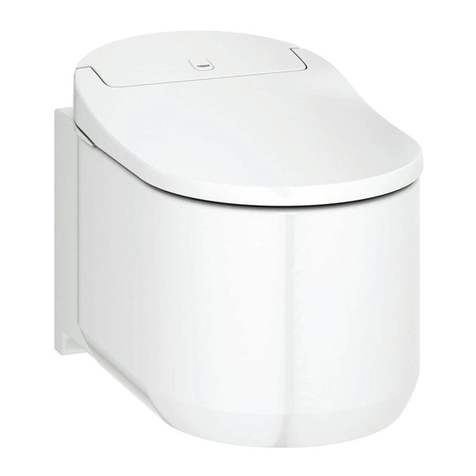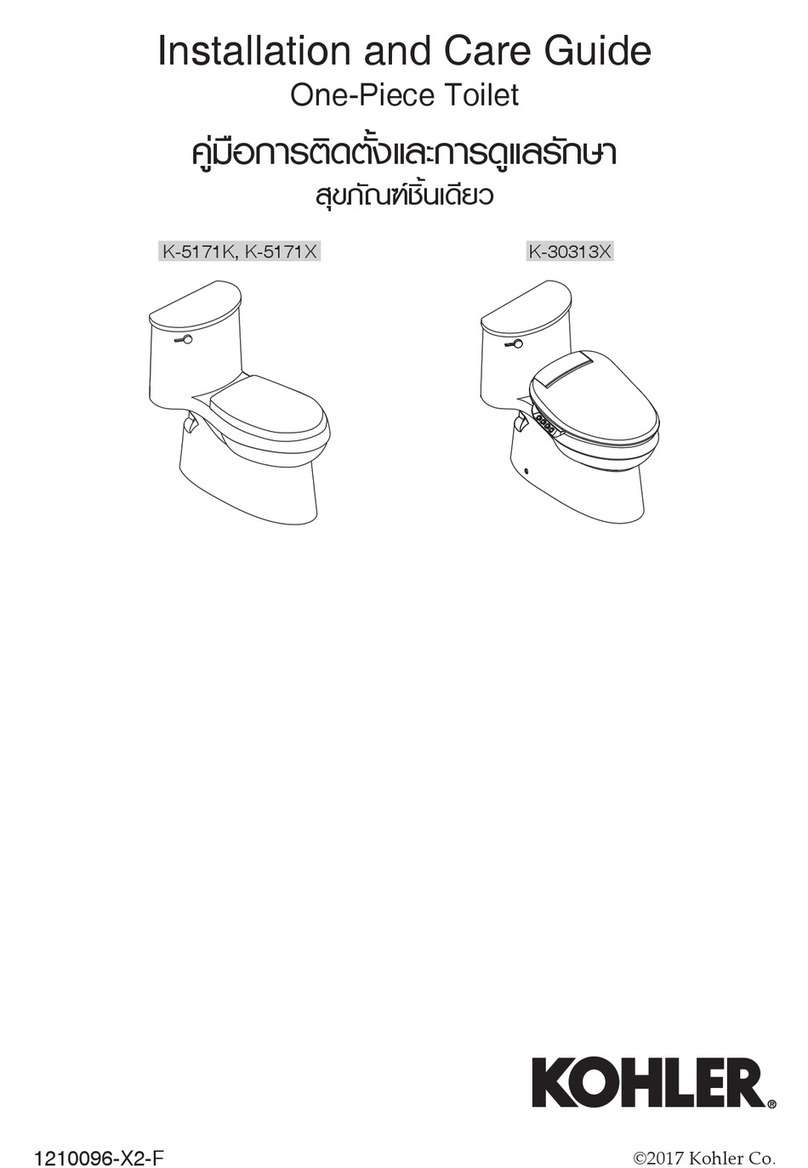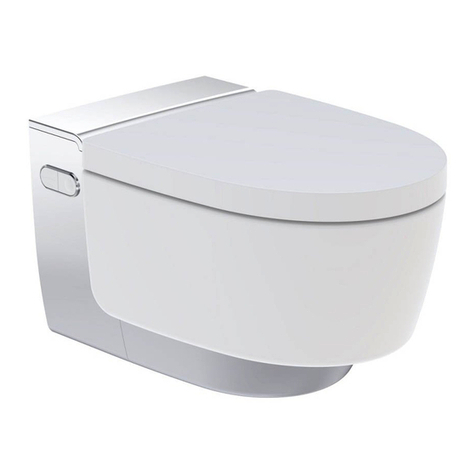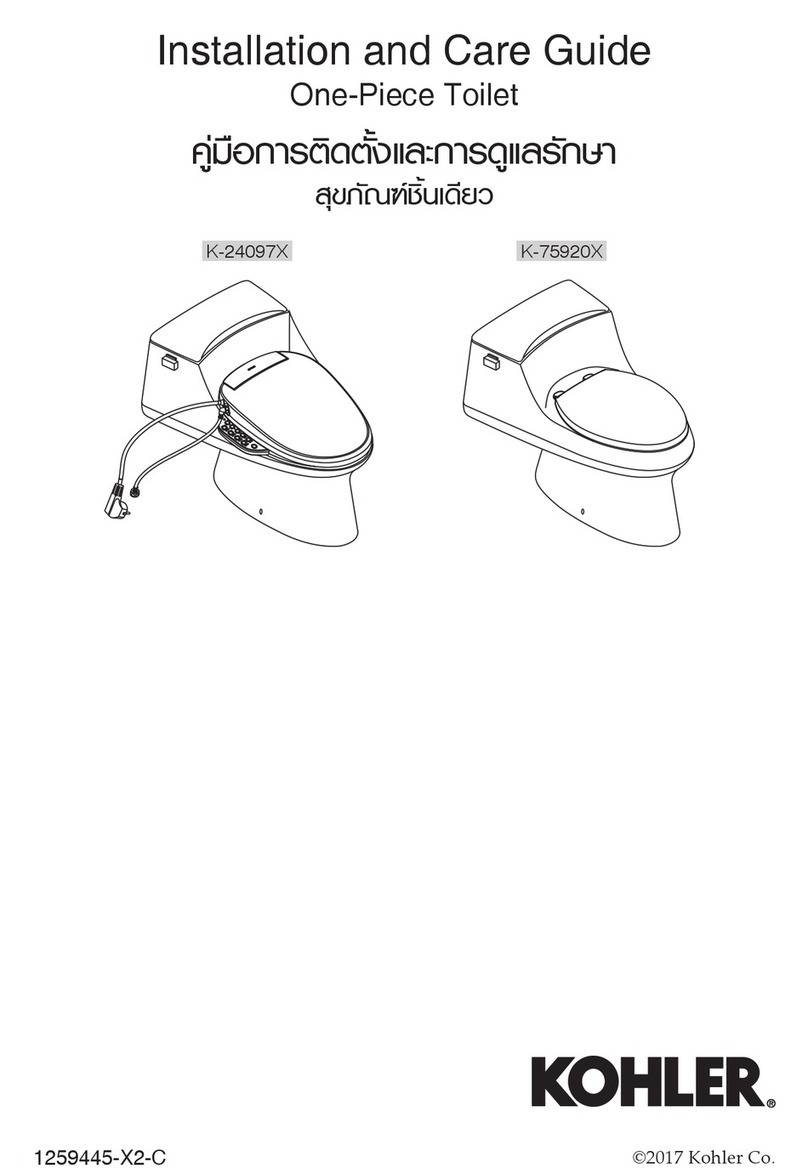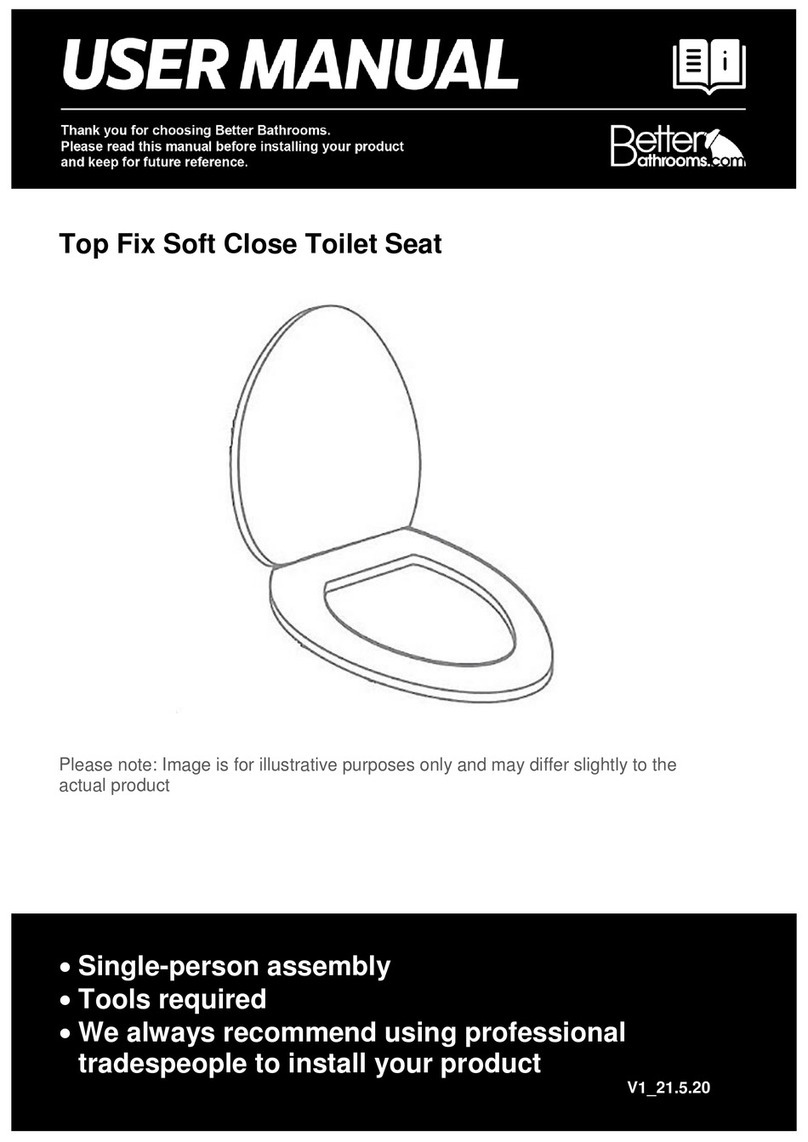
110128.01 9
Elektrische scheepstoiletten HATO...
9 Storingen
Zorg ervoor dat tijdens een eventuele reparatie de stroomtoevoer uitgeschakeld is.
Storing
De motor draait en de cyclus verloopt
correct, maar het water in de toiletpot
wordt te langzaam of helemaal niet afge-
zogen.
De cyclus verloopt cor-
rect, maar na elke cyclus
blijft er een kleine hoeveelheid water in
de toiletpot achter.
De motor maakt een ‘ratelend’ geluid.
Na het indrukken van de drukknop wordt
de cyclus niet uitgevoerd.
De cyclus begint, maar het water stroomt
te langzaam in de toiletpot.
De cyclus begint, maar er stroomt geen
water in de toiletpot.
Mogelijke oorzaak
De beluchterklep sluit niet goed meer af.
De afvoerleiding is verstopt.
De zeefkorf is verstopt.
De afvoerhoogte is te groot.
De afvoerleiding is verstopt
Een hard voorwerp bevindt zich in de
zeefkorf en stoot tegen de draaiende
messen.
Er is geen voedingsspanning aanwezig.
De stekerverbinding van bedieningspa-
neel naar toilet is los.
De besturingselectronica is defect.
De drukknop is niet krachtig genoeg
ingedrukt.
Het transparante slangetje van de druk-
knop zit ergens klem en daardoor kan de
drukschakelaar niet ingeschakeld wor-
den.
De drukschakelaar is defect.
De tijdklok is defect.
Het filter van het magneetventiel is ver-
stopt
De waterdruk is te laag.
De afsluiter van de watertoevoer staat
niet open.
Het magneetventiel is defect.
De waterdruk is te laag.
Oplossing
Reinig de beluchterklep of vervang de
beluchterklep.
Ontkalk de afvoerleiding.
Reinig de zeefkorf.
Wijzig de installatie.
Ontkalk de afvoerleiding.
Demonteer het motorblok en verwijder
het voorwerp uit de zeefkorf.
Controleer hoofdschakelaar en zekering.
Maak de verbinding in orde.
Vervang de besturingselectronica.
De drukknop stevig indrukken en vast-
houden.
Maak het transparante slangetje vrij.
Vervang de drukschakelaar.
Vervang de tijdklok.
Reinig het filter
Zorg voor een waterdruk van minimaal
1,5 bar.
Open de afsluiter.
Vervang het magneetventiel.
Zorg voor een waterdruk van minimaal
1,5 bar.
NEDERLANDS
Storing
De motor draait en de cyclus verloopt
correct, maar het water in de toiletpot
wordt te langzaam of helemaal niet afge-
zogen.
De cyclus verloopt correct, maar na elke
cyclus blijft er een kleine hoeveelheid
water in de toiletpot achter.
De motor maakt een ‘ratelend’ geluid.
Na het indrukken van de drukknop
wordt de cyclus niet uitgevoerd.
De cyclus begint, maar het water stroomt
te langzaam in de toiletpot.
De cyclus begint, maar er stroomt geen
water in de toiletpot.
Mogelijke oorzaak
De beluchterklep sluit niet goed meer af.
De afvoerleiding is verstopt.
Het pomphuis is verstopt.
De zeefkorf is verstopt.
De afvoerhoogte is te groot.
De afvoerleiding is verstopt
Een hard voorwerp bevindt zich in de
zeefkorf en stoot tegen de draaiende
messen.
Er is geen voedingsspanning aanwezig.
De stekerverbinding van bedieningspa-
neel naar toilet is los.
De besturingselectronica is defect.
De drukknop is niet krachtig genoeg
ingedrukt.
Het transparante slangetje van de druk-
knop zit ergens klem en daardoor kan de
drukschakelaar niet ingeschakeld wor-
den.
De drukschakelaar is defect.
De tijdklok is defect.
Het filter van het magneetventiel is ver-
stopt
De waterdruk is te laag.
De afsluiter van de watertoevoer staat
niet open.
Het magneetventiel is defect.
De waterdruk is te laag.
Oplossing
Reinig de beluchterklep of vervang de
beluchterklep.
Ontkalk de afvoerleiding.
Reinig het pomphuis.
Reinig de zeefkorf.
Wijzig de installatie.
Ontkalk de afvoerleiding.
Demonteer het motorblok en verwijder
het voorwerp uit de zeefkorf.
Controleer hoofdschakelaar en zekering.
Maak de verbinding in orde.
Vervang de besturingselectronica.
De drukknop stevig indrukken en vast-
houden.
Maak het transparante slangetje vrij.
Vervang de drukschakelaar.
Vervang de tijdklok.
Reinig het filter
Zorg voor een waterdruk van minimaal
1,5 bar.
Open de afsluiter.
Vervang het magneetventiel.
Zorg voor een waterdruk van minimaal
1,5 bar.
12 V / 24 V120 V / 230 V
12 V / 24 V
120 V / 230 V

